M1 Garand
I don’t, in fact, own a Garand. My grandfather had one, and it was very popular with the youngsters, but he swapped it for a paint job on his Jeep Commanche in later years. That may have been for the best, as even King Solomon might be puzzled how to divide one rifle among five grandsons.
Still, I have to talk about the Garand to lay the groundwork for two more guns, the M1 Carbine and the M-14.
So, what is the M1 Garand? To quote General George Patton, “The finest battle implement ever devised.” Some people claim there have been some improvements in that regard in the 90 years since the its adoption as United States Rifle, Caliber .30, M1. Black rifles, intermediate calibers, yada yada.
But today we’re looking at the Garand. So named for John C. Garand, its primary designer.
Where did it come from? What made it great?
The history of military firearms shows an interesting pattern. In the early days, progress was relatively slow. The flintlock musket, the famous “Brown Bess” that built Britain an empire, stayed in service from 1722 to 1838, over a hundred years.
The caplock smoothbore only held sway for a comparatively short few decades, before the development of the rifled musket, (sounds like a contradiction, but the “minie ball” it fired was undersized to permit rapid loading but expanded to engage the rifling, thus permitting accurate firing.)
The pace of change continued to accelerate. In an international system with rapidly industrializing nations vying for supremacy, whenever one country made an advance, the whole world had to re-arm accordingly. There would be a new normal for a few years, but then innovation would set in, and the whole thing started over again.
The rifled musket continued in US service for 18 years, and was superseded by a breech-loading cartridge rifle, the Trapdoor Springfield. That soldiered on through the Indian Wars, but was finally replaced by the repeating Krag-Jorgensen, just in time for the Spanish-American War. Just in time to find out how much better a repeater the Spanish Mauser was, with its clip loading and flatter shooting cartridge.
The US decided “Fine! We’ll make our own Mauser!” and by licensing numerous German patents, came up with the 1903 Springfield in the then new cartridge of .30-03. Thirty caliber, introduced in 1903.
“Thirty ought three?” you ask? “I thought it was thirty-ought-six?”
Once again, the US was slightly behind the curve. The .30-03 was an advance over the Krag’s .30-40, (in this case the second number stands for the forty grain powder charge. Hey, nobody ever said cartridge nomenclature made sense,) but it fired a 220 grain round nose bullet, just in time for the light, fast, and pointy bullet revolution. The new spire point bullets so far out-performed the 220, that the ‘03 cartridge was replaced in only three years by—you guessed it—the .30-06.
And that’s where things hit a new normal. A point of stasis. Essentially every nation fought the War to End All Wars with a bolt-action rifle firing a very ballistically similar cartridge. TheBritish Lee-Enfield in .303, the Russian Mosin-Nagant in 7.62x54R, the German Mauser G98 in 7.92x57 Mauser, The aforementioned Springfield ‘03 in .30-06. The French Lebel, in 8MM. The furthest anyone departed from that pattern was the Austrian Mannlicher M95, which was a straight-pull polt action. Even the Ottomans used an assortment of Mausers.
Part of what led to that 20+ year stasis was the idea of the theoreticians that a rifleman should be providing deliberate, aimed, long range fire. Most of the above rifles came with sights calibrated for truly wild distances. It was thought that a mechanism that cycled too quickly, or too high a capacity would encourage soldiers to fire indiscriminately, “wasting,” ammunition.
I’ll give you a moment to imagine the plight of the common soldier of any nation, trying to fight that machine-gunner’s war with a heavy, cumbersome, slow-firing rifle that held five, or at most ten rounds before requiring a slow, cumbersome reload.
My mind, at least, boggles. All the more at the penny-wise and pound-foolish nature of a general staff willing to pour out blood like water at the Somme, or Passchendael, but unwilling to give those poor doomed men a quick-firing rifle. They might “waste” ammunition, after all.
So that was the state of things in the inter-war period. It fell to a French-Canadian immigrant, and naturalized American citizen John C. Garand, an inventor and engineer working for the government’s Springfield Armory to develop a semi-automatic fit for the common soldier. It took fifteen years of iteration, trial, and error before the rifle that bears his name was adopted as the US Rifle, Caliber .30, M1.
The M1 Garand, as it is universally known, is just under a pound heavier than its predecessor, the 1903 Springfield, at 9.5 lbs, vs 8.7. They are almost identical in size. The Springfield uses a five round stripper clip, (no, get your mind out of the gutter. The rounds are “stripped” off of the clip, as they are pushed into the rifle’s internal magazine.) The Garand uses a unique system, the 8-round en bloc clip, in which clip, rounds, and all are pushed into the action in a block, as the Frenchman said.
The biggest difference, of course, is that the Springfield is a bolt action, permitting 15-20 aimed shots per minute. The new M1, on the other hand, was semi-automatic. The hand didn’t need to leave the grip and trigger, just aim, fire, aim, fire, and repeat until it was time to replace the en bloc clip, to the tune of 50 rounds per minute.
For once, the United States were ahead of the curve, rather than behind it. We entered WWII not quite fully equipped with the new rifles, but wartime production soon took care of that. All the other great powers entered the war with their first war rifles largely unchanged.
The difference was striking.
“...the finest battle implement ever devised,” as General Patton put it.
As I said at the top, I don’t own a Garand, so these have all been stock pictures. My grandfather did have one, and I got to shoot it a few times, though never nearly as much as I’d have liked. .30-06 isn’t cheap, after all. He was trained on the Garand, and sometimes carried one in Korea. His preference, however, was for the Garand’s little brother, the M1 Carbine.
I do have his Carbine. Check back next week for that Tale of a Gun.

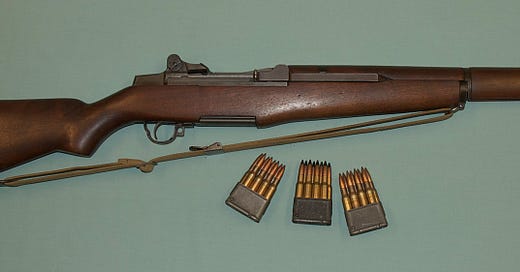



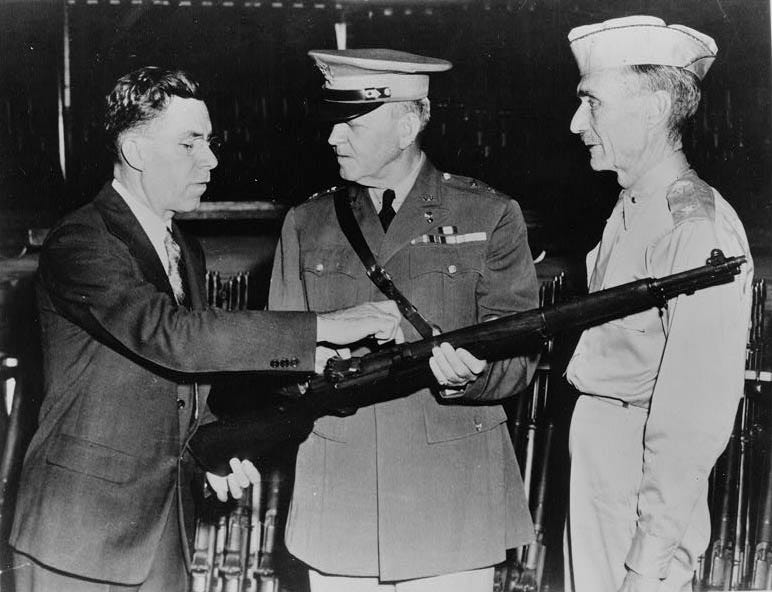
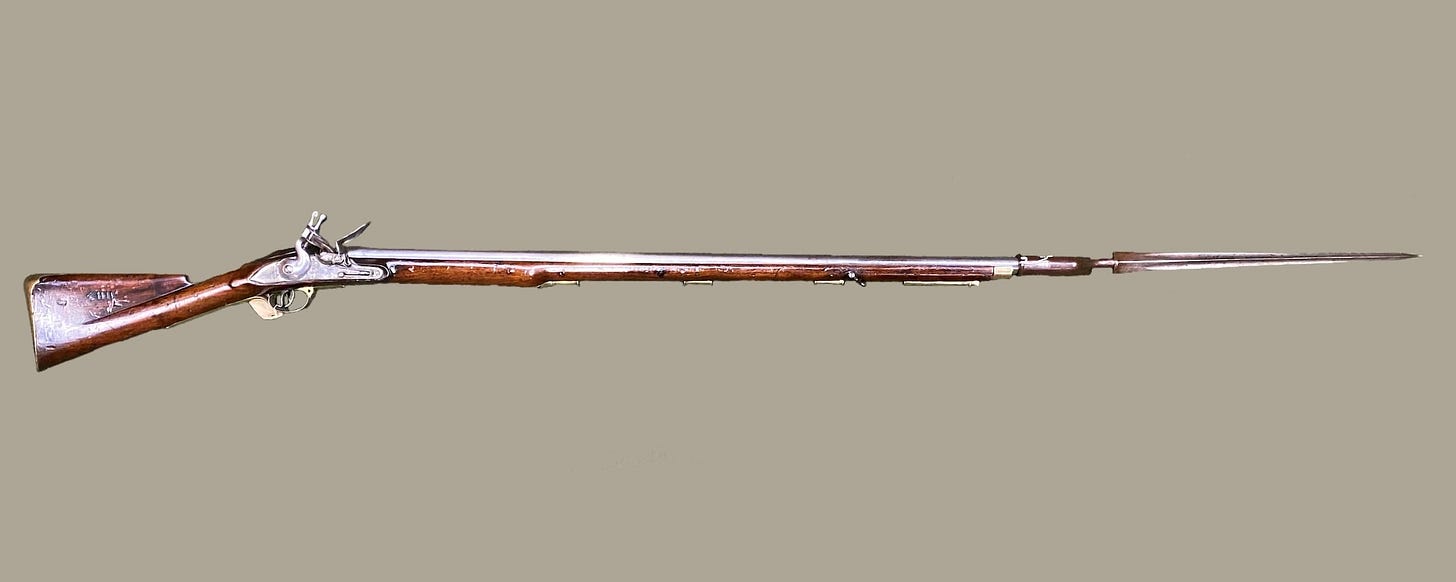



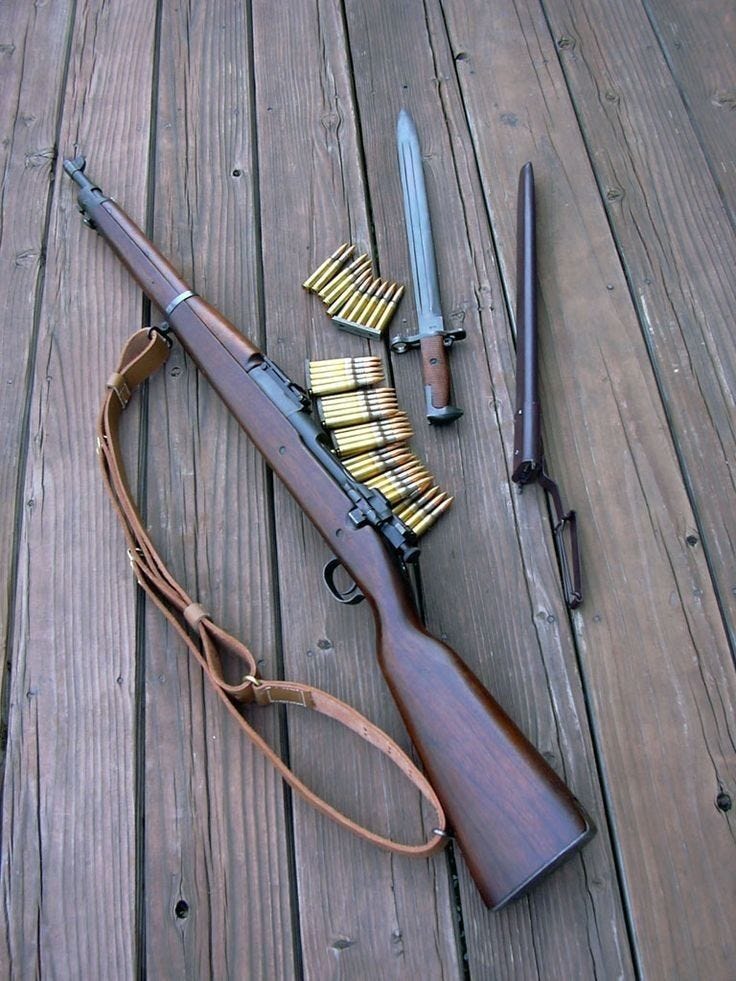
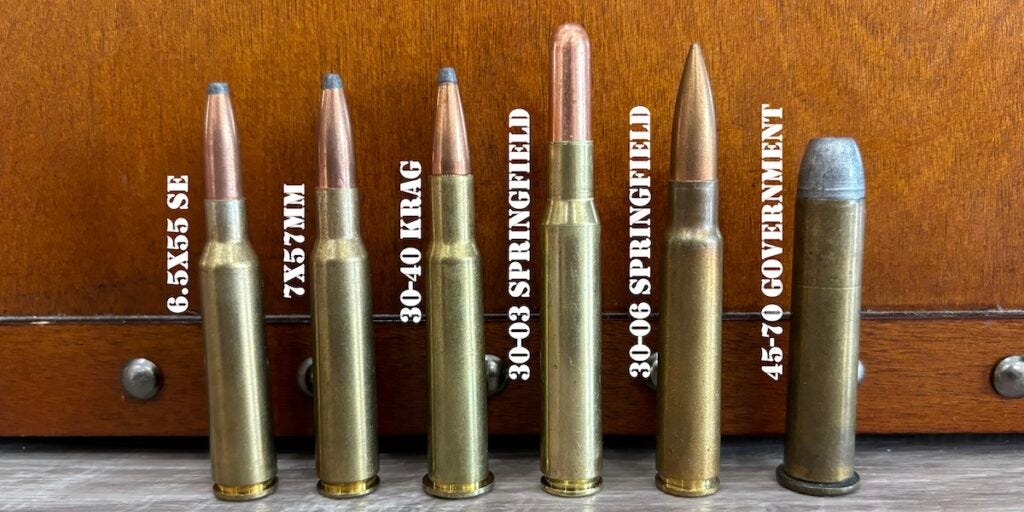
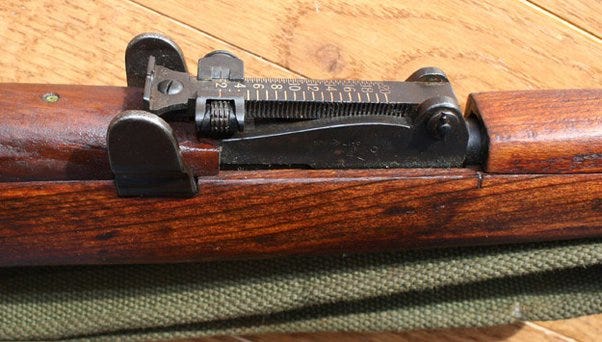
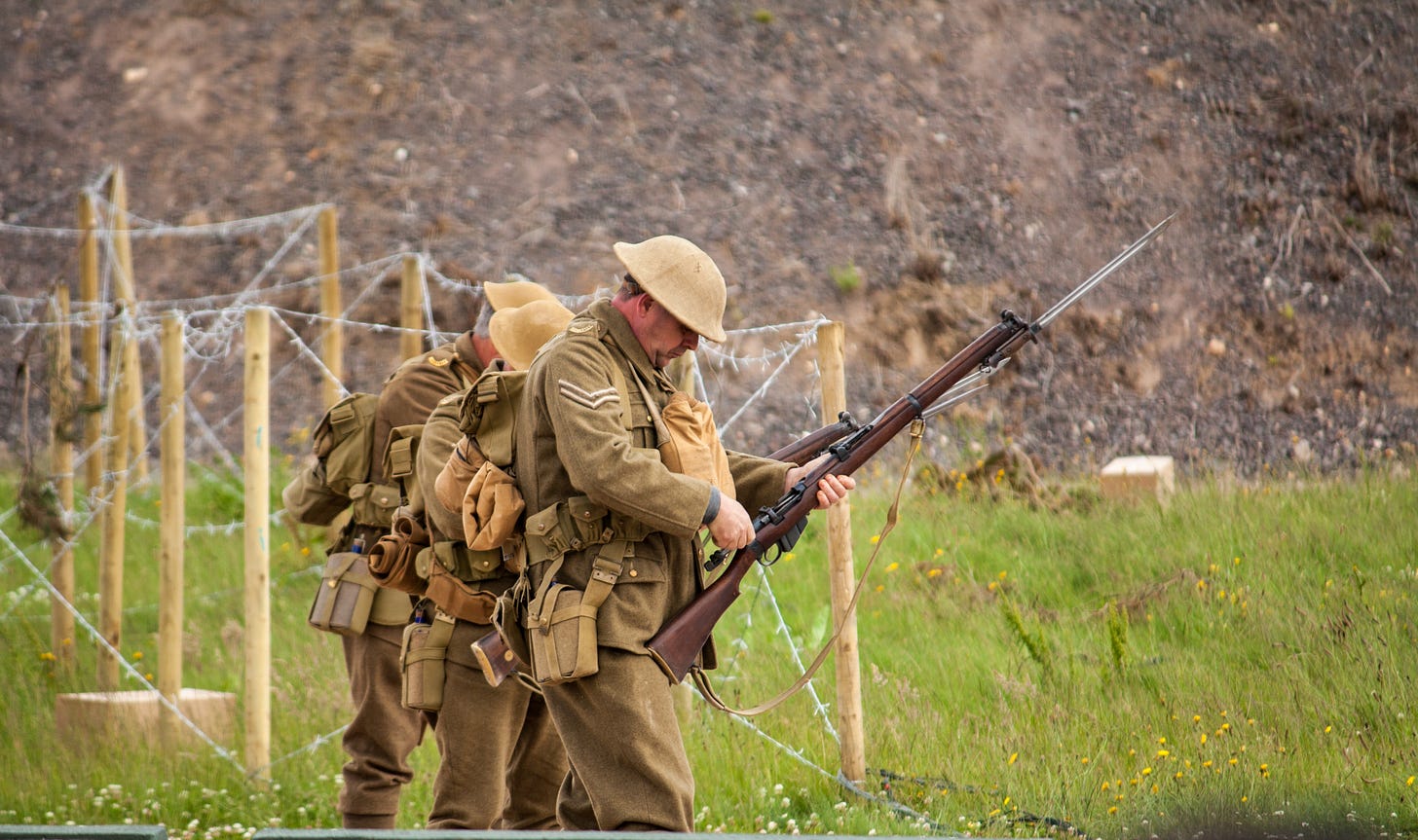
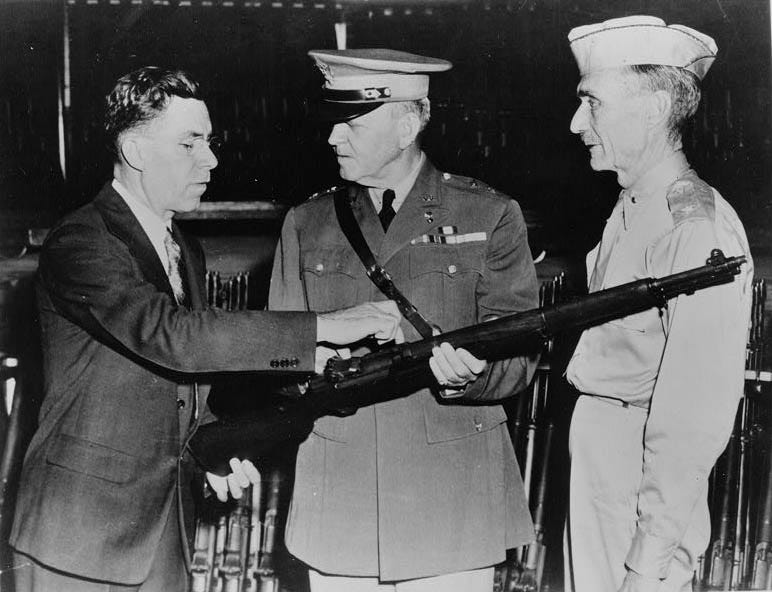
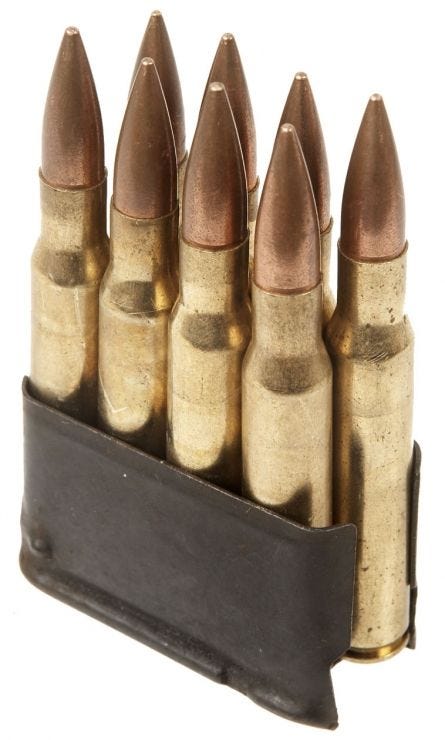

Imagine the delight of those American farm boys, shooting bolt actions since they were six, finally getting their hands on an M1 semi-auto.
Have one & an M-1 Carbine. Great rifles! Stock though of the M-1 Garand is a little bulky when compared with that of the Mauser K98; ergonomically the latter is superior IMHO. And as advanced & forward-thinking as John Garand was in designing/developing the weapon - & the U.S. Army to approve it - the U.S. was still way behind the curve when it came to machine guns, the water jacketed M1917 & the air cooled M1919 being the main squad machine guns throughout World War II & Korea. How this happened is inexplicable when the revolutionary design of the German MG34 & MG42 was well-known. MG 34 tech was nearly 20yrs old by the time Korea began. The Browning BAR was/is great, but can only support 20rnds in the mag.